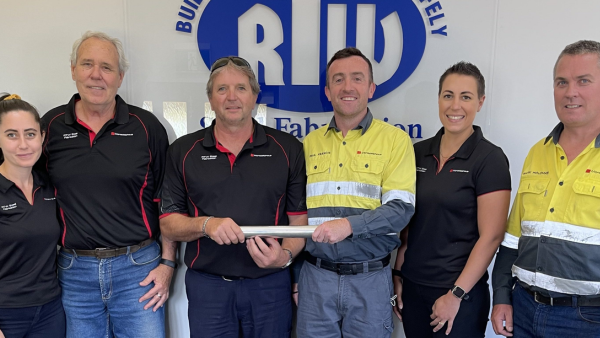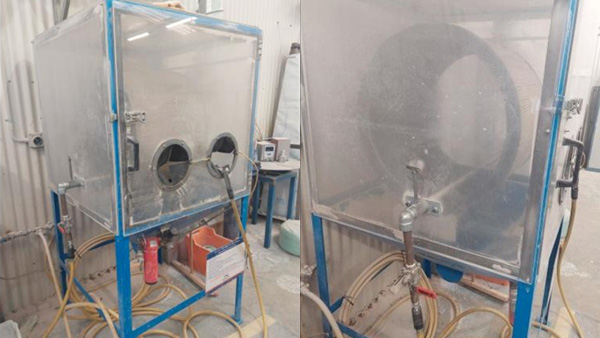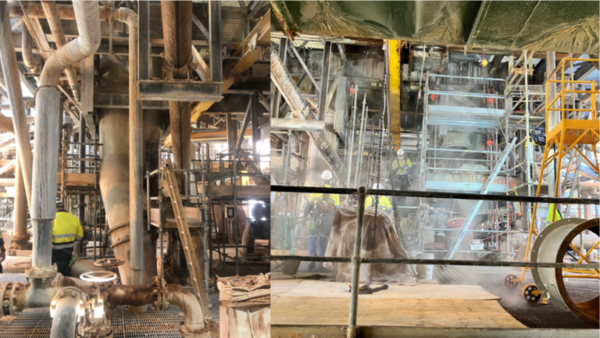When a routine audit revealed gaps in overhead protection, it was clear action was needed.
A team of around 50 Monos’ personnel—including management, workshop fabrication, blast and paint, and site installation—came together to tackle the challenge head-on, delivering crucial safety improvements across multiple locations.
The project involved a range of engineered solutions, from installing permanent handrails to keep people out of drop zones to fitting polygrid mesh guarding and modifying existing structures to better contain potential dropped objects.
One of the most challenging tasks was installing a 3.7-tonne tray and chute at the 1000T Bin—a challenge that required creativity, teamwork, and a complete rethink of the original design.
“Installing the tray and chute was the biggest challenge by far,” Project Engineer Michael Sewell said.
“The original design wasn’t practical for construction, and since the work had to be done during a shutdown, we had to come up with a new plan.”
The tray needed to be bolted to the underside of the conveyor, 15 metres in the air, but lifting it with a crane or chain blocks wasn’t an option. Instead, the team worked with the customer’s design engineers to fabricate and install a lifting frame on top of the conveyor. Using electric winches, they safely hoisted the tray into place—eliminating the need for a crane and saving time and costs.
Seeing the tray finally lifted into position was a major moment for Michael.
“A lot of the prep work isn’t obvious when you’re on-site, but when we finally got to that stage, it was a huge morale boost for the crew,” he said.
Beyond the technical challenges, the project highlighted the power of teamwork.
The site execution team played a crucial role in the planning stages, helping to identify and solve issues before the critical shutdown period.
“We had a strong relationship with the customer, so when technical issues came up, we could work through them quickly. We’d submit a technical query and get a response almost immediately,” Michael explained.
The fabrication team also stepped up under tight deadlines, delivering construction packages with minimal resources. In some cases, areas of the project didn’t receive AFC drawings until just before the shutdown began, meaning fabrication had to be done on the fly.
Now that the project is complete, the improvements have significantly reduced the risk of dropped objects—removing potential hazards that could have caused serious incidents or production delays.
But the work isn’t over yet—this is just one of three Fatality Elimination Overhead Protection (FEL OHP) projects Monadelphous has been tasked with.
While underground works are nearly finished, planning is still underway for shutdown-critical surface works, which will bring their own unique challenges.
For now, the team can take pride in knowing they’ve made the site safer.



Leave a comment